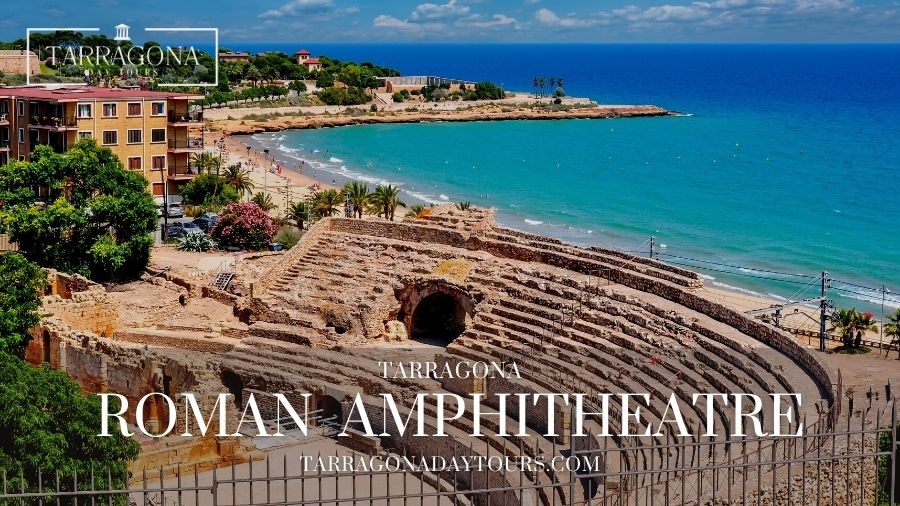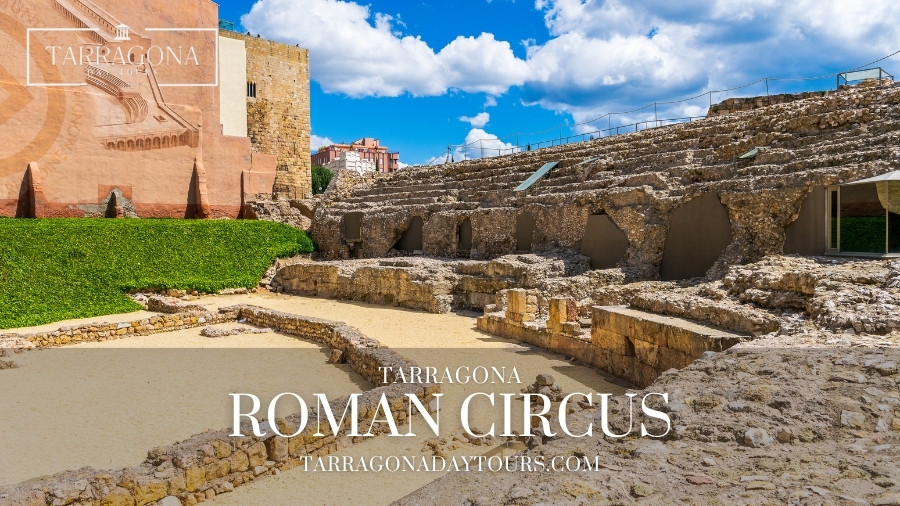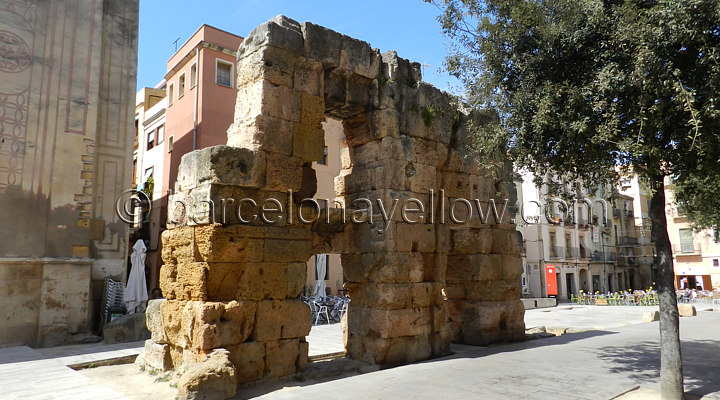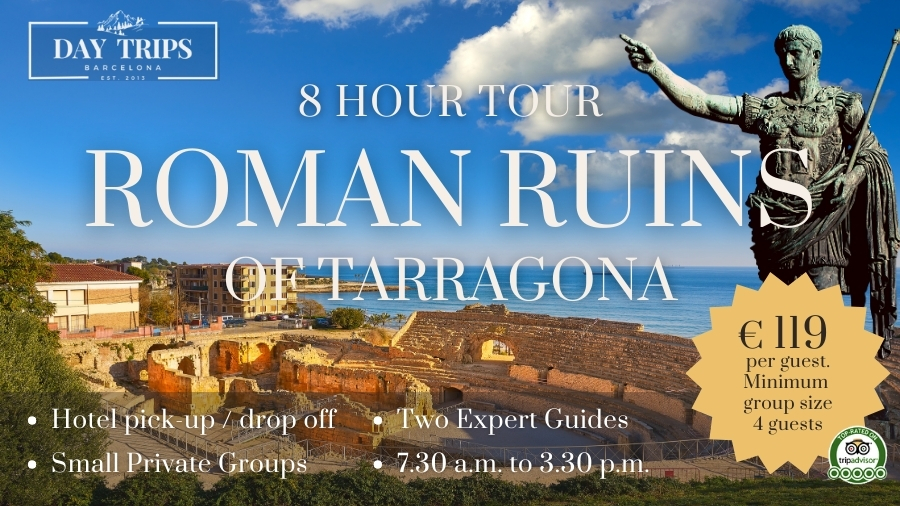| HOME |
| Hotels |
| Apartments |
| Attractions |
| Restaurants |
| Tickets & tours shop |
| Tours |
| Maps & travel planners |
| Airports & transport |
| Maps |
| Events |
| Shopping |
| Contact us |
|
| What to see on a cruise shore excursion in Tarragona, Spain |
What to see on a cruise stop in Tarragona, Spain Tarragona, on the northeastern coast of Spain, boasts a rich tapestry of historical wonders. The Roman city was called Tarraco. It's full name was 'Colonia Iulia Urbs Triumphalis Tarraco'. Tarragona stands as a living testament to its illustrious Roman past, once serving as the capital of the Roman province of Hispania Citerior during the Roman Republic and later as a crucial stronghold of the Roman Empire. Whether exploring its ancient ruins or savoring its vibrant culture, Tarragona promises an unforgettable experience steeped in history and charm. Tarragona tourist office Day tours Tarragona Roman ruins HistoryFounded in the 3rd century BC, Tarraco, as it was known in antiquity, flourished as a hub of commerce, culture, and power. Its strategic location on the Mediterranean coast facilitated trade and military endeavors, leading to the construction of magnificent structures that still dot the cityscape today. As one wanders through its streets, the echoes of Roman triumphs and achievements resound, offering a captivating glimpse into the city's rich and storied heritage. Tarragona was named Tarraco by the Romans in the 1st century BC and is the oldest Roman settlement on the Iberian Peninsula and the oldest walled Roman city outside Italy.Tarraco was established on the site of an Iberian settlement shortly after the Roman army landed on the Iberian Peninsula in 218 BC during the Second Punic War against Carthage. The Punic Wars were a series of three wars fought between Rome and Carthage. In Roman times Tarragona was the most important city in Hispania/Spain and famed for its climate and beauty. Augustus Caesar, the first Emperor of Rome, spent time in Tarraco on several occasions. He landed in Tarraco on January 1, 26 B.C as part of his three year military tour of Spain and Gaul. After leading the Roman victory in the Cantabrian Wars in the north of the peninsula (the last rebellion against the Romans in Hispania), Augustus conquered the north of Hispania, annexed the entire peninsula to the Roman Empire and carried out an administrative reorganisation of Hispania in 19 BC dividing Hispania into three provinces: Baetica, Lusitania, and Tarraconensis. Tarraconensis was the biggest and Tarraco was the capital. Then Augustus spent time in Tarraco, possibly recuperating from a near death experience when a lightning strike killed his torchbearer. Roman emperor Hadrian spent the winter of 122/123 in Tarraco and restored the Temple of Augustus before crossing the Mediterranean into Mauretania in North Africa, where a Moorish revolt had broken out Roman Amphitheatre Begin your journey through time at the ancient Tarragona Roman Amphitheatre, where gladiatorial contests once captivated audiences. the intricate Roman walls that encircle the historic center stand as enduring symbols of Tarragona's grandeur in the ancient world. The Amphitheatre of Tarragona is on the coast of the Mediterranean Sea by Platja del Miracle beach. Roman Circus Then visit Tarragona's Roman Circus, dating back to the 1st century AD, which spans over 300 meters in length and could accommodateup to 25,000 spectators making it among the largest and most impressive of its kind in Hispania. Serving as the venue for exhilarating chariot races and other spectacles, the circus was a focal point of entertainment and social gatherings for the Roman citizens of Tarraco. Although time has weathered its grandeur, excavations and preservation efforts have revealed the intricate layout and architectural ingenuity of this ancient marvel, offering visitors a captivating glimpse into the vibrant cultural and sporting life of Roman Tarragona. Roman walls Tarragona's Roman walls are a formidable testament to the city's strategic importance and military prowess during the ancient Roman era. They encircle the historic heart of Tarraco with an aura of strength and resilience. Constructed in various stages, the remaining fortifications stretch over four kilometers. Built with massive stone blocks and fortified with towers and gates, the walls served not only as a barrier against invasion but also as a symbol of Tarraco's prestige and power. Medieval quarterWander through the labyrinthine streets of the Tarragona's old quarter, where every corner reveals centuries-old secrets including Roman remains and stunning Gothic architecture. Don't miss the towering Tarragona Cathedral, a testament to the city's medieval grandeur. For a taste of Tarragona's maritime heritage, stroll along the Rambla Nova, a bustling promenade with panoramic views of the Mediterranean Sea from the 'balcony of the Mediterranean' overlooking 'La Platja del Miracle' beach Roman ruins outside the cityVisit Roman ruins in Tarragona, Spain near Barcelona. Tarragona near Barcelona. Tarragona is just 1 hour south of Barcelona by car or train. The Tarragona roman ruins are the Roman amphitheatre, Roman circus, Roman walls, and a Roman Aqueduct (4km outside the city). Tarragona tourist office Day tours Tarragona Roman ruins The Roman imperial city was called Tarraco (full name Colonia Iulia Urbs Triumphalis Tarraco.) There are many impressive Roman ruins in Tarragona, including the Roman amphitheatre, Roman circus, Roman walls, and a Roman aqueduct outside the city. The Roman ruins of Tarraco are a UNESCO World Heritage Site. Tarragona's Roman Ferreres aqueduct also known as El Pont del Diable - The Devil's bridge - is 4km from city center and best reached by car or on a day tour to Tarragona  Roman walls Tarragona  Well preserved remains of Roman circus at Tarragona  Replica of Caesar Augustus statue near the Roman walls of Tarragona. The emperor Augustus took up residence in Tarragona after his military campaigns against the tribes of Cantabria and Asturias and so during his stay there Tarraco became the de facto capital of the Roman empire  The medieval part of Tarragona has many Roman ruins.   © Copyright Barcelonayellow.com. Do not copy from this page without permission All rights reserved |
| Last Updated on Sunday, 11 February 2024 17:37 |
|
|
Thursday, 25 September 2025

Barcelona Spain - Barcelona Travel Guide - Copyright 2007-2025
Privacy Policy and Cookies • Legal Disclaimer • Copyright
BarcelonaYellow SiteMap 2025
Barcelona Latest News:
COVID-19 - Barcelona Latest News
Barcelona Safety Guide 2025
Barcelona Top 10 attractions 20254
Plan 3 days in Barcelona 2025
About us
About us
Contact us
Privacy Policy and Cookies
Copyright notice
Legal disclaimer
Twitter Barcelona events
Partnerships
Advertising
COVID-19 - Barcelona Latest News
Barcelona Safety Guide 2025
Barcelona Top 10 attractions 20254
Plan 3 days in Barcelona 2025
About us
About us
Contact us
Privacy Policy and Cookies
Copyright notice
Legal disclaimer
Twitter Barcelona events
Partnerships
Advertising
Accommodation
Hotels in Barcelona
Hotels near Fira Exhibition
Hotels near Camp Nou
Hotels near Cruise Ships
Short Stay Apartments
Practical information
Useful visitor information
How to get to Barcelona airport
Cruise Ship Terminals
Barcelona maps
Airport buses
Barcelona metro
Taxis
Travel cards
Hotels in Barcelona
Hotels near Fira Exhibition
Hotels near Camp Nou
Hotels near Cruise Ships
Short Stay Apartments
Practical information
Useful visitor information
How to get to Barcelona airport
Cruise Ship Terminals
Barcelona maps
Airport buses
Barcelona metro
Taxis
Travel cards
Things to do
Top 10 attractions Barcelona
Photos of Barcelona
Restaurant Guide
Nightlife Guide
Things to do in Barcelona
Barcelona beaches
Book tours and tickets
Skiing near Barcelona
Weather Barcelona
Weather in Barcelona
5 day forecast Barcelona
Top 10 attractions Barcelona
Photos of Barcelona
Restaurant Guide
Nightlife Guide
Things to do in Barcelona
Barcelona beaches
Book tours and tickets
Skiing near Barcelona
Weather Barcelona
Weather in Barcelona
5 day forecast Barcelona
Top Festivals and events
Barcelona Events 2025
Christmas in Barcelona
New Years Eve 2025
MWC 2025 Barcelona
Sant Jordi's Day
Barcelona Marathon
Barcelona Half Marathon
Easter
Festa de Gracia
La Merce Festival
FC Barcelona calendar
Barcelona Events 2025
Christmas in Barcelona
New Years Eve 2025
MWC 2025 Barcelona
Sant Jordi's Day
Barcelona Marathon
Barcelona Half Marathon
Easter
Festa de Gracia
La Merce Festival
FC Barcelona calendar
Moving to Barcelona
Moving to Barcelona
Long term apartment rentals
Relocation agencies
Real estate agencies
Spanish schools
Meeting people
Finding work
Yellow pages directory
Partner websites:
DayTripsBarcelona.com
Stepbac.com
PhotoMemoirs.co
Helpfurl.com
Moving to Barcelona
Long term apartment rentals
Relocation agencies
Real estate agencies
Spanish schools
Meeting people
Finding work
Yellow pages directory
Partner websites:
DayTripsBarcelona.com
Stepbac.com
PhotoMemoirs.co
Helpfurl.com
